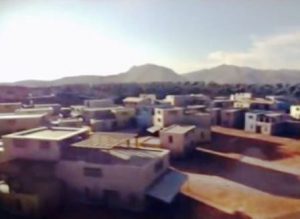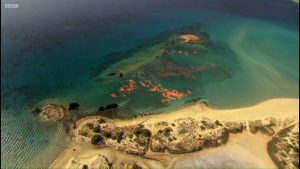The image of the underwater state you see is not in an exotic Latin American region but next to us. In Elafonisos, near Pavlopetri and the ancient settlement of 2800 BC, it has been preserved in excellent condition. The water has protected from time and human interference, most of the buildings. The impressive is that it is only 4 meters below the sea and everyone could “visit” them. The submerged two storey houses with its gardens, temples, cemetery and harbor are clearly visible. Up to now, 15 buildings with at least 12 rooms each have been identified as well as a complex water management system with canals and water pipes.
Scattered throughout the city there are statues, large clay amphoras, tools and other items of everyday use. In total it occupies an area of about 9 acres and is probably the oldest submerged city in the world. Scientists speculate that the city was drowned by an 8-rich quake, around 1,000 BC, while others shifted the event to 375 AD.

The city as it “reconstructed” the researchers digitally in the form they had before sinking

In 2011 the BBC presented a documentary about Pavilopri, the “city under the waves”. Three-dimensional representation.
Geologist Fokion Negris, first president of the Academy of Athens, has described the underwater state since 1904! But in 1967 Southampton University Professor of Oceanography, Nicholas Fleming, discovered the state and the following year with a team of archaeologists at the University of Cambridge mapped it, in collaboration With the Ephorate of Antiquities of Sparta, Professor Angelos Delivorria. In 2009, John Henderson of the University of Nottingham took charge of the archaeological mission. Henderson created a digital imagery that shows impressively how the city was before it sank. Practically, Greeks can not visit it as it has not been used for tourists and most probably ignore its existence.
Residents’ protests for anchorages
A human protection chain has been created by local residents and tourists for Pavlopetri, protesting for the anchorages of the ships at the Vatican bay. On their side were found municipal councilors from the municipalities of Elafonisos and Monemvasia, thus supporting the protest movement.
“Our place is beautiful, unique, has history, present and future, despite the great difficulties that pass.
It is enough not to let people who put their personal interest over the general interest and prospect of the Vatican to be hurt by him ” Say “Active Citizens” in their announcement.